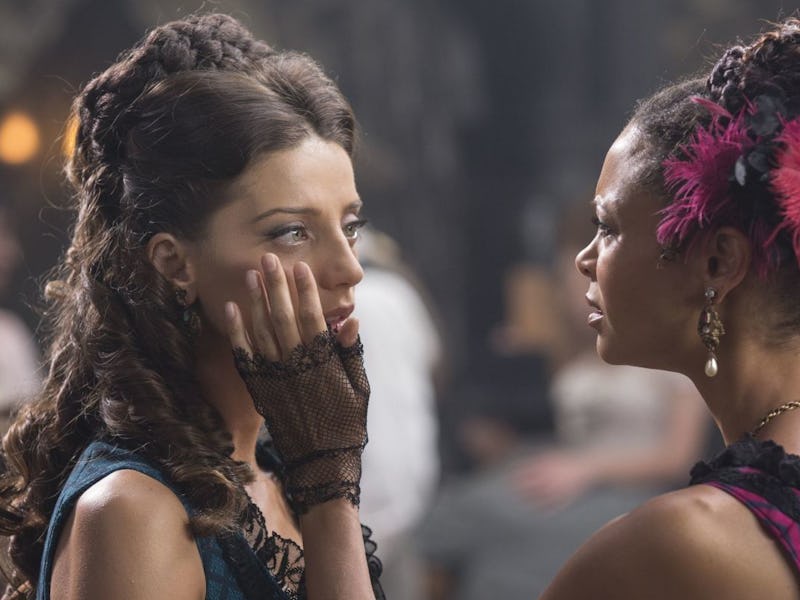Westworld's Other Revolution Is Scientific
Dr. Robert Ford, godhead, doesn't begrudge his creations the spirit of inquiry.

In Westworld’s fourth episode of its first season, Dr. Robert Ford (Anthony Hopkins) stirs corporate, palace, and sexual intrigue into a solution already thick with blood and “milk.” The measurements of these various elements are exact and Ford is clearly in possession of a catalyst. But he won’t say what it is. Nor will he discuss his experimental hypothesis. Instead, he opts to savor his secret, relishing it in a way that indicates a genuine inquiry is underway. The man presiding over Westworld, it has become clear, is now more interested in science than engineering. No wonder he allows it to flourish in his park.
The automatons’ scientific revolution has arrived anachronistically late, but is occurring at pace. In “Dissonance Theory” (hat tip to scientist Leon Festiger, its creator), we see Maeve embracing the scientific method and doing some Isaac Newton-style testing on herself.
That the park’s robots are waking up to the nature of the world is obvious. The show’s premise almost requires that it reference — along with modern discourse on consent, bicameralism, artificial intelligence, and reincarnation — the Age of Enlightenment and the controversies of the 18th century. What seems more significant is that Ford, the park’s intermittently angry god, facilitates the emergence of modern inquiry among his sinner bots. The episode makes it very clear that this is not an oversight. Ford says he knows everything about his guests and demonstrates that to be the case in such a way as to heavily imply that his robots also serve as surveillance equipment. Then he allows his corporate minder to see his creations behave like a swarm, indicating that there must be a network function and an interface beyond speech of gesture.
He is, he intimates, an all-knowing creator.
Can he watch the horrors of his park through the eyes of Dolores, Teddy, and Maeve? Almost certainly. And what does he see? He sees Maeve holding a toy “shade” made in the image of a park worker by Native American robots. He sees her discovering a stash of drawings in her own hand of other park workers. He sees her acting on this information and a memory, excavating a bullet from herself.
And in seeing this, Ford must know that Maeve has discovered the ugly truth, that time, for her, is a flat circle. He watches her try to figure out the larger system that she’s a part of (or maybe one of his lackeys does the viewing) and decides not to intercede.
Is this Ford’s catalyst memory and the collection of data it facilitates? Perhaps, but it’s impossible to know at this point. What’s more compelling within the universe of the park is that faith and scientific thinking among the robots seem to be running in the same direction. The Native Americans appear to have a quasi-religious insight into the world they occupy and so, from what we’ve heard about him, does the Wyatt, the big bad who has remained off screen thus far.
Seeing faith and inquiry operating hand in hand is unusual on television presumably because most modern programs that touch on these issues focus on the concerns of modern religious extremists. But it wasn’t always like that. Saint Thomas Aquinas was all about the sciences. And his idea of “revealed scripture,” the notion that observable facts reflect on the almighty, resonates within Westworld. Everything the robots see reflects on Ford and his deceased partner Arnold.
Ford, playing the humane god, welcomes the attention.